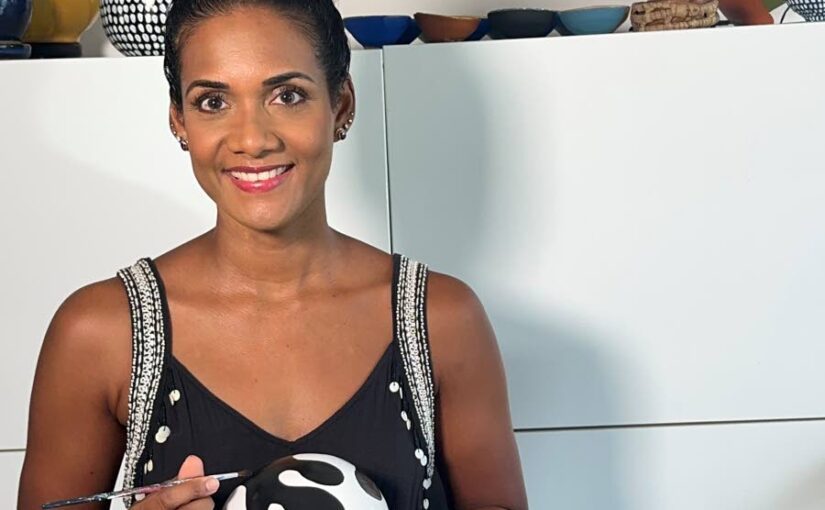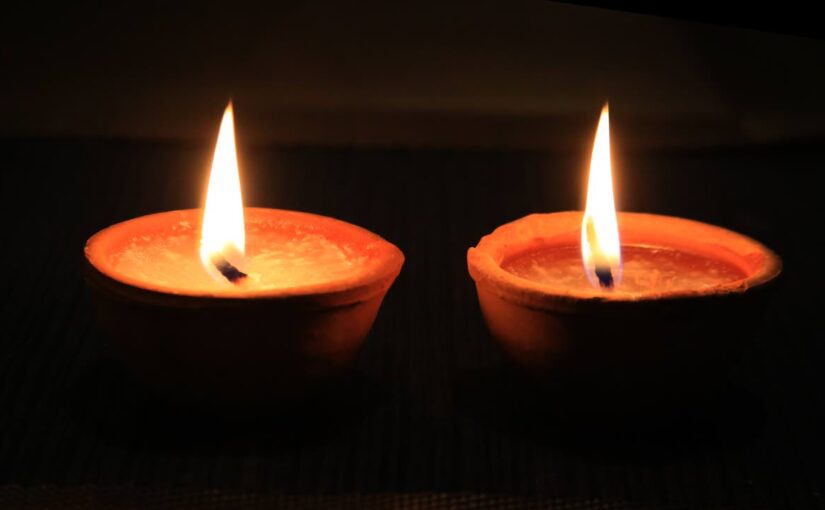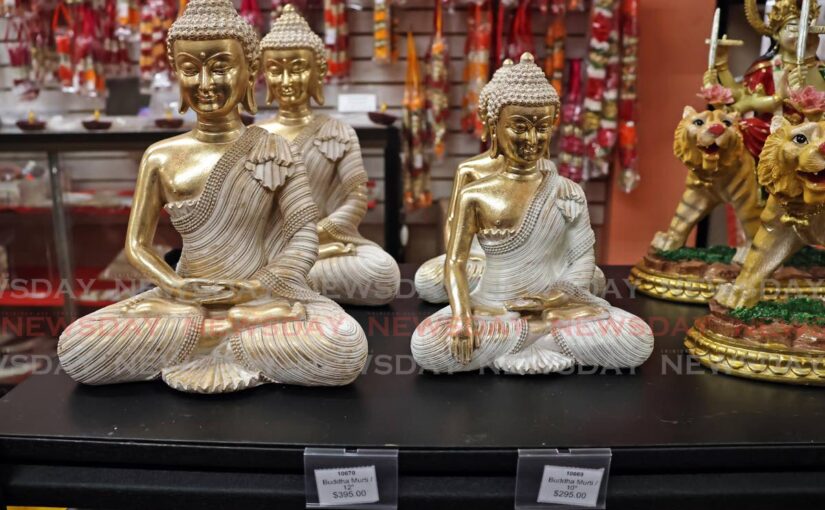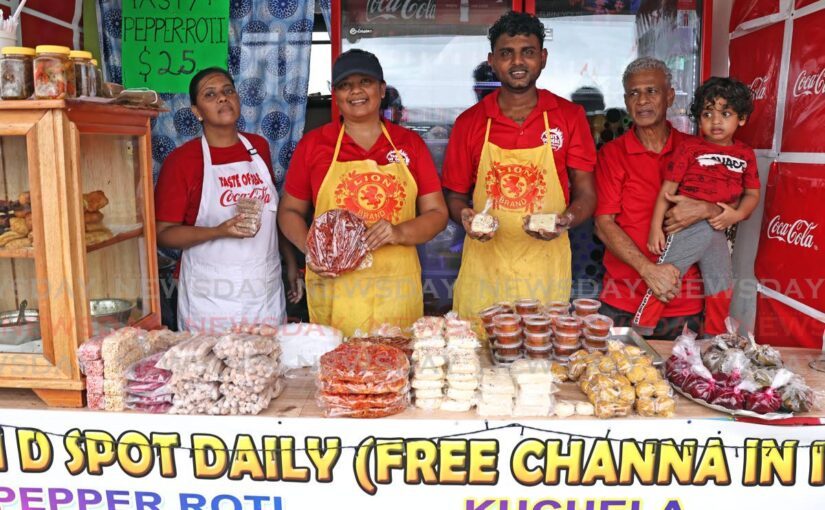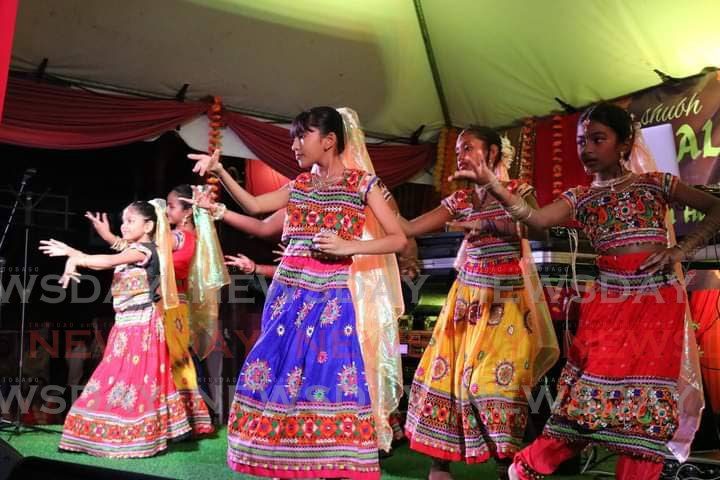Divali is the celebration of light over darkness, and artist Samantha Seebalack has been adding her own beauty to the Hindu festival of lights. In...
Vous n'êtes pas connecté
- English
- Français
- عربي
- Español
- Deutsch
- Português
- русский язык
- Català
- Italiano
- Nederlands, Vlaams
- Norsk
- فارسی
- বাংলা
- اردو
- Azərbaycan dili
- Bahasa Indonesia
- Հայերեն
- Ελληνικά
- Bosanski jezik
- українська мова
- Íslenska
- Türkmen, Түркмен
- Türkçe
- Shqip
- Eesti keel
- magyar
- Қазақ тілі
- Kalaallisut ; kalaallit oqaasii
- Lietuvių kalba
- Latviešu valoda
- македонски јазик
- Монгол
- Bahasa Melayu ; بهاس ملايو
- ဗမာစာ
- Slovenščina
- тоҷикӣ ; toğikī ; تاجیکی
- ไทย
- O'zbek ; Ўзбек ; أۇزبېك
- Tiếng Việt
- ភាសាខ្មែរ
- རྫོང་ཁ
- Soomaaliga ; af Soomaali
Rubriques :
 Maroc - NEWSDAY.CO.TT - A la Une - 31/Oct 13:21
Maroc - NEWSDAY.CO.TT - A la Une - 31/Oct 13:21
Divali’s light: Handmade deyas still a top seller
Despite the prominence of newer technologies in the Festival of Lights, and an overall diminishing demand, traditional hand-crafted deyas remain among the most coveted items devotees seek to welcome Mother Lakshmi into their homes for Divali. At the back of Radika’s Pottery Shop along the Southern Main Road, Chaguanas, fourth-generation potter Bassant Charran stands behind an uninspiring but effective table with a mound of clay mined from Carlsen Field spinning on his potter’s wheel. With over 40 years of experience at his disposal and at least a century of it etched into his DNA, Charran’s hands effortlessly guide the mound into the shape of a small bowl in less than three seconds. A divet is made by pinching the rim of the still-malleable clay as it is separated from the mound and placed onto a large wooden slab to dry before baking. Surrounding Charran are already finished deyas in a cascading pile against the wall of a corridor, like produce in the market. Behind the work area, an isolated room’s door is ajar, revealing thousands more climbing the walls and covering the ground. This is the result of at least four months of preparation for the season. Bassant said he could mould a maximum of 3,000 deyas daily but admits he averages around 2,000 to 2,500. [caption id="attachment_1117801" align="alignnone" width="1024"] Lighted deyas represent the triumph of light over darkness on Divali night. - Photo by Angelo Marcelle[/caption] These clay vessels will go on to be filled with oil and a lit cotton wick at thousands of homes to welcome the goddess of prosperity. Like the families of these homes, each clay pot is unique – a consequence of being moulded by hand. The shop’s owner, Andy Benny, comes from a long line of potters and took over the business over 30 years ago from his mother who established it in the late 1960s. He admits buying patterns changed over the years with the introduction of alternative products like electric and wax deyas, the latter is the only one that has really caught on. “People experimenting. That electric deya never really shoot off. How much people you does see does buy that? That come and that gone. Only indoor stores might put that.” He said the company began making wax deyas around 2005 due to increasing public demand. He said wax deyas are more costly to produce and therefore sell for around $3 each depending on size while traditional deyas are $10 a dozen. He said while there continues to be an increased demand for wax deyas, the traditional ones remain the popular choice. He said he sells three traditional deyas for every wax deya. When he first started selling the wax deyas almost 20 years ago, he said that ratio was more like six traditional for every wax. Leena Baychoo, who operates in Rio Claro, sells around 300,000 deyas annually made from clay sourced at their property. Though she admits wax deya demand is increasing which led to her producing them around three years ago, traditional deyas are still the top seller. She said when she first started making wax deyas she sold 1,000. This year, she said, she sold around 5,000. She said the demand for traditional deyas is among those who purchase in bulk, either for retailing or for use in large events like community celebrations while households trend towards the wax deyas. “A thousand (traditional) deyas would sell at $400...and just 100 deyas selling at $250 in wax.” She believes the annually increasing demand for the wax deyas, while more expensive, comes from the ease at which it could be used. These can just be placed and lit while traditional deyas require oil to be filled and cotton wicks to be rolled and made. Further up the road in Chaguanas is Benny’s nephew, Donny, who said he also sells more traditional deyas than wax. However, he said he observed a decrease in the number of deyas being purchased since the covid19 pandemic. Since then, he said, he has begun making 20,000 to 30,000 fewer deyas annually. He said he makes around 1,500 to 2,000 deyas daily during peak season. He attributes the dwindling demand to an increase in the cost of living and other economic pressures reducing the quantity people purchase for their homes and community celebrations. He also blames increased competition in the market. [caption id="attachment_1117798" align="alignnone" width="683"] Potter Bassant Charran making a deya by hand Radika’s Pottery, Edinburgh, Chaguanas - Photo by Lincoln Holder[/caption] “They importing deyas now from in China and all over. So that kinda drop the traditional value. The quality may be nicer because they getting a different clay...and when they bring the large volume of deyas what they import, they will sell it at a cheaper price.” Donny estimates deya sales around Divali account for around 40 per cent of his annual revenue. While deyas are a top seller for the potters during Divali, their operations focus on making other items. This is what they said allows them to cope with the decreased demand. “We have to be able to sustain year-round and not just depend on Divali because for Divali everybody selling deyas now. Every supermarket there’s deyas. Deyas is a thing that real competitive now,” Benny said. Leena said she does gardening while her husband has another job to help sustain their children. [caption id="attachment_1117799" align="alignnone" width="1024"] Hundreds of wax and regular deyas, waiting to be packaged for sale at Radika’s Pottery, Edinburgh, Chaguanas. - Photo by Lincoln Holder[/caption] While all potters continued the tradition inherited from their forefathers, Leena and Donny were uncertain if the mantle would be passed on to their children as they believed the art form was dying. Leena said if her children chose to follow in her footsteps, they would need to be the ones to invest in machinery to modernise production. However, Donny did not believe his children would continue the tradition and was also uncertain if he would too. “Sometimes it costs you cheaper to buy and sell, although we’re a maker.” He intends to explore this option further and intends to make the transition by 2026. Benny has incorporated machinery in his daily production by way of a pug mill which prepares the clay for moulding. He said, however, machines to form deyas and other items would be a challenge due to space constraints. The post Divali’s light: Handmade deyas still a top seller appeared first on Trinidad and Tobago Newsday.
Articles similaires
The deya – a symbol of spiritual enlightenment, unity during Divali
BAVINA SOOKDEO As the festival of Divali draws near, deyas (earthen lamps) are being sold at puja stores, supermarkets and along the roadside as...
Family legacies at the heart of puja stores
BAVINA SOOKDEO THE puja store industry has blossomed into a niche yet essential business sector that caters to a range of religious and cultural...
The essential message of home
Dara E Healy Lakshmi karoti kalyasnam Aarogyam sukh sampsdam Mama shstru vinaashaaya Deep jyotir namostute Mother Lakshmi Grant me all round welfare...
The essential message of home
Dara E Healy Lakshmi karoti kalyasnam Aarogyam sukh sampsdam Mama shstru vinaashaaya Deep jyotir namostute Mother Lakshmi Grant me all round welfare...
From de valley to Divali
My October 31 plans included attending a friend’s Divali light-up, then joining two visiting Norwegian friends for a Divali event at Tropikist...
Divali Nagar, a platform for up-and-coming entrepreneurs
The Divali Nagar is home not only to cultural expressions and celebrations but with at least 10,000 patrons nightly, it provides the perfect platform...
The business of murti-making: Crafting devotion amid challenges
Murti-making, the craft of creating sacred statues representing Hindu deities (gods and goddesses) stands as a significant cultural and spiritual art...
President: Divali entails devotion, action
PRESIDENT Christine Kangaloo has praised the devotion of worshippers to prepare for Divali, and called for this to be translated into action in their...
Dancing for Aunty Jenine: El Socorro dance group honours founder
WEARING crimson and saffron saris, accentuated with flowing iridescent orhnis (a traditional Indian headscarf), Dynamic Dance Fusion, an all-girl...
Les derniers communiqués
-
Aucun élément

